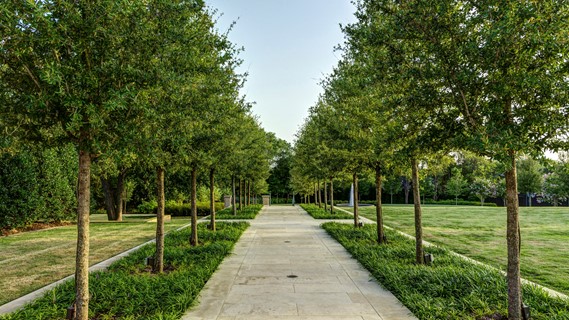What Does Hilton Head Landscapes Do?
What Does Hilton Head Landscapes Do?
Blog Article
Not known Incorrect Statements About Hilton Head Landscapes
Table of ContentsThe Ultimate Guide To Hilton Head LandscapesOur Hilton Head Landscapes IdeasHilton Head Landscapes Fundamentals ExplainedHilton Head Landscapes Can Be Fun For AnyoneEverything about Hilton Head LandscapesThe Single Strategy To Use For Hilton Head LandscapesThe Greatest Guide To Hilton Head Landscapes
Line develops all forms and patterns and can be made use of in a range of ways in the landscape. Line in the landscape is produced by the side between 2 products, the synopsis or shape of a type, or a long linear function. Lines are a powerful tool for the designer because they can be made use of to create an infinite variety of shapes and kinds, and they manage movement of the eye and the body.

Lines in the landscape. The properties of lines establish exactly how people respond to the landscape, both mentally and literally.
3 Simple Techniques For Hilton Head Landscapes
Straight lines are usually found in hardscape edges and product. Curved lines develop a casual, natural, kicked back character that is connected extra with nature and unbalanced balance. Bent lines move the eye at a slower rate and add mystery to the area by developing concealed views. Vertical lines move the eye up, making a room feel larger.
Vertical lines in the landscape consist of high, slim plant product, such as trees, or tall frameworks, such as an arbor or a bird home on a pole. Straight lines move the eye along the ground plane and can make a room really feel larger. Low lines are extra subdued and produce a feeling of rest or repose.
The Definitive Guide to Hilton Head Landscapes
Reduced lines are developed by reduced yard walls, pathways, and short hedges. Lines are used to attract kinds on a plan. In plan view, they define plant beds and hardscape areas. Lines are likewise developed by the vertical types of developed attributes and plant product. There are three key line types that develop form in the landscape: bedlines, hardscape lines, and plant lines.
Bedlines attach plant product to your home and hardscape since the eye adheres to the line, moving the stare with the landscape. Hardscape lines are developed by the edge of the hardscape, which delineates the developed structure. Line can additionally be produced by lengthy and slim products, such as a fencing or wall.
Hilton Head Landscapes Things To Know Before You Buy
Kind is discovered in both hardscape and plants, and it is typically the leading aesthetic component that spatially organizes the landscape and frequently figures out the style of the garden. The type of frameworks, plant beds, and yard ornaments likewise identifies the total type style of the yard. Formal, geometric forms include circles, squares, and polygons.
Plants develop kind in the yard with their describes or silhouettes, however kind can also be defined by a gap or negative area in between plants - landscaping hilton head sc (https://www.anyflip.com/homepage/laavm#About). Circles can be full circles, or they can be separated into fifty percent circles or circle segments and combined with lines to produce arcs and tangents
Some Known Facts About Hilton Head Landscapes.
Circles can also be stretched right into ovals and ellipses for even more variety and interest. Circles are a solid layout kind because the eye is always drawn to the facility, which can be used to emphasize a focal point or link other types. Number 2. Round forms in hardscape and grass panels.
The square type can also be segmented and used repeatedly to develop a grid pattern. Unlike circles, squares are more powerful on the edges, which can be lined up or overlapped to develop distinct patterns and even more complicated kinds.
Meandering lines typically resemble the all-natural course of rivers or streams and can be called smooth lines with deeply bent undulations. Meandering lines (Number 3) function well for paths, plant bedlines, and completely Your Domain Name dry stream beds. Twisting lines can include rate of interest and enigma to a garden by leading visitors around edges to uncover brand-new sights and rooms.
How Hilton Head Landscapes can Save You Time, Stress, and Money.

Figure 5. Fragmented edges: stepping rocks in path. Form is the most long-lasting top quality of a plant (Landscapers near me). https://www.goodreads.com/user/show/179629915-steven-gonzales. Typical plant types are well established and standardized, as form is one of the most regular and recognizable feature of plants. Kind can also be created with the massing of plants, where the overall mass produces a different type than a specific plant.
An extremely different kind must be used with careone or two work well as a prime focus, yet a lot of produce mayhem. Natural plant forms, as opposed to over-trimmed kinds, should establish the mass of the composition. The significance of total form is more or less depending on the checking out perspectivethe type of a tree can appear fairly different to an individual standing under the cover versus checking out the tree from a range in an open area.
Not known Details About Hilton Head Landscapes
Plant kinds also create and specify the gap or open areas in between the plants, developing either convex or concave kinds in deep spaces. High-arching tree branches typically develop a concave open area under the branches, and a round cover with reduced branches fills up the room to create a convex form in the open space under the tree.

Report this page